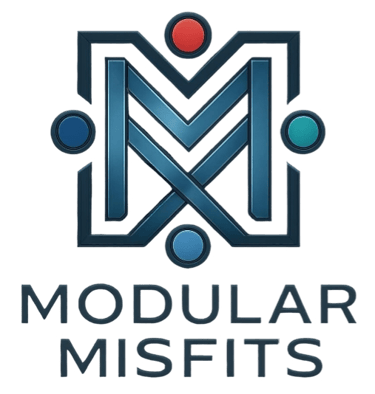Executive Summary
Most enterprises spend millions trying to make their systems talk to each other and still end up with digital Babel. Modular Misfits changes that. We don’t sell “integration platforms”; we architect ecosystems where data moves freely, securely, and intelligently. Our approach combines open standards, zero-trust data encapsulation, and graph-based metadata models to transform disconnected silos into a unified, adaptive data environment. The result is interoperability that isn’t bolted on, it’s built in.
The Challenge: Data Without Dialogue
Across federal, defense, and commercial domains, organizations drown in data that refuses to cooperate. Legacy systems hoard information in incompatible formats, while cloud migration only relocates the chaos. Each new tool promises “connectivity,” yet most just add another proprietary layer between systems that were never designed to speak the same language. The result is a tangle of brittle APIs, duplicated logic, and manual reconciliation that slows every decision cycle. True interoperability isn’t about adding more software, it’s about establishing shared semantics, trusted governance, and architectural independence from vendors and infrastructure.
Our Approach: Modular by Design, Misfit by Nature
At Modular Misfits, we apply systems engineering discipline with a healthy disregard for convention. Every engagement starts with the principle that data should remain sovereign, portable, and self-describing. We design architectures using modular open-systems principles (MOSA) that allow organizations to plug and play new capabilities without breaking existing workflows. Our interoperability model integrates three key elements:
Standardized Interfaces: REST, GraphQL, and message-bus interoperability patterns that eliminate translation overhead.
Self-Enforcing Data Capsules: Zero-trust wrappers that bind identity, policy, and encryption directly to the data itself, enabling secure exchange across domains and clouds.
Semantic Graph Layer: A dynamic metadata layer that treats relationships, not systems, as the foundation of data exchange.
By fusing these, we make data interoperable across time, vendors, and missions. Whether it’s unifying HR, logistics, or sensor data, our framework ensures information can move fluidly while maintaining provenance and control.
Outcomes: From Data Silos to Data Synergy
Companies that work with us discover that interoperability isn’t an IT problem, it’s an operational multiplier. Our clients achieve measurable gains in decision velocity, compliance automation, and analytic readiness. They can fuse structured, semi-structured, and streaming data in near real time without centralized ingestion or costly refactoring. More importantly, their data becomes a living asset, self-documenting, policy-aware, and reusable across business functions.
The result is a foundation for continuous modernization. As missions evolve, systems adapt. New technologies can be integrated instead of rewritten. And security isn’t compromised in the name of convenience, it’s strengthened by design.
